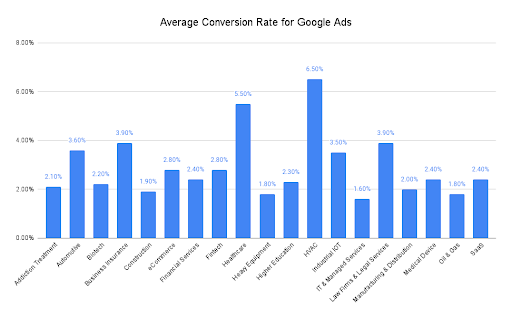From Click Costs to Conversions: How Web Design Impacts Google Ad Rates Performance

Businesses frequently place a great deal of emphasis on ad spend optimisation—modifying bids, focussing on demographics, and honing keyword strategies—in the ever-changing realm of digital marketing. However, one element that is sometimes disregarded has a significant influence on Google Ad Rates and the overall effectiveness of campaigns: website design. Not only can an organised, user-friendly website enhance the user experience, but it also has a direct impact on the cost per click and the efficiency with which those clicks result in quantifiable outcomes.
Why Website Design Matters in Paid Advertising
The journey is merely getting started when a user clicks on your advertisement. The relevance of your ad copy is not the only factor taken into account by Google’s algorithm. It assesses the calibre of the landing page to which the advertisement drives traffic. Websites with poor design can irritate users, raise bounce rates, and eventually lower your ad quality score.
Generally speaking, greater costs per click (CPC) correspond to poorer quality scores. On the other hand, a modern, useful, and conversion-oriented website frequently increases ad relevancy and lowers cost. This alignment between web design and advertising can make the difference between squandered ad spending and significant return on investment for companies working with a skilled website design company Australia.
The Link Between Web Design and Google Ad Rates
Bidding strategy, keywords, and competition all have an impact on Google Ad Rates. However, the ad quality score is a crucial and manageable component. This score is mostly based on:
• Click-through rate (CTR) expectation
• Ad significance
• Landing page experience
Web design is the main focus of the landing page experience. Not only are mobile responsiveness, a clear structure, and quick load times best practices, but Google itself has made them standards. Ad expenses will unavoidably increase for pages that don’t adhere to these guidelines.
When two businesses are competing for the same keyword, for instance, the company with the better-optimised landing page (by means of a powerful design, unambiguous messaging, and easy navigation) may be able to get a lower cost per click (CPC) while still outperforming rivals.
Design Elements That Influence Ad Performance
- Page Speed
The Google… focus on quickly loaded pages. Users must engage for a second. Otherwise, the experience and ad quality both get hit there. Compress images, check your code, and host your website on respected servers.
- Mobile Responsiveness
With most of the ad clicks coming from mobile devices, a site that does not respond well actually contributes to heightened bounce rates. Mobile-friendly layouts boost user experience and ad relevance signals.
- Clear Call-to-Actions (CTAs)
Once a click lands on the site, there should be a clear objective to lead the user, which could range from filling out a form, purchasing, or subscribing to a service. Often, CTAs that are misplaced and/or poor navigation give the user nothing to really engage with, and this is the consequence of poor ROI from the ad.
- Trust Signals
Security badges, testimonials, and professional design tell the user, “This level of professionalism is here, so I’m confident.” When users feel secured and confident, conversions increase and their cost per conversion decreases.
- Content Alignment
Strong ad copy may attract clicks; if the landing page does not fulfil the promise of the ad copy, visitors away. Designing landing pages with matching content ensures consistency, which in turn helps keep the relevance scores high.
The Conversion Equation: Beyond Click Costs
Although a lower Google Ad Rate is useful, conversions are what really make a campaign successful. A badly designed website that doesn’t turn leads into customers wastes resources, even if companies lower click costs.
Here’s where ROI is directly impacted by design:
• Visitors are smoothly guided towards conversion points via intuitive layouts.
• Captivating images minimise distractions and maintain users’ attention.
• Accessibility features broaden the pool of possible clients.
In other words, site design ensures that the money spent produces measurable benefits rather than merely saving money on advertisements.
Why Australian Businesses Are Prioritising Web Design
Working with a competent website design company Australia is becoming increasingly significant for local businesses in competitive digital markets like Australia. This makes sure that their digital assets satisfy Google’s quality standards as well as consumer expectations. Businesses can successfully compete in paid search environments, where each click carries a premium, by using the appropriate design strategy.
Beyond advertisements, investing in design has long-term advantages. Building trust with repeat consumers, improving organic SEO performance, and establishing a consistent brand presence across platforms are all made possible by a well-designed website.
Bringing It All Together
It’s common to undervalue the connection between Google Ad Rates and web design. The website decides whether a click generated by an advertisement adds value. Companies that integrate well-designed web experiences with clever ad strategies benefit from reduced costs per click as well as increased conversion rates.
The answer for businesses looking to maximise their advertising expenditures is frequently to create more intelligently rather than to raise their bids. Businesses may enhance Google Ad performance and give their audience a more engaging, reliable, and effective digital experience by considering web design as a crucial component of their advertising strategy.
Read More: Brand Positioning in Marketing: How Your Social Selling Index Reflects It Online



